Table of contents
- KTM 1190 Adventure with MSC from Bosch Tried new lean ABS
- MSC stands for Motorcycle Stability Control
- The MSC also reaches its limits on very smooth surfaces
- Interview with Dr. Fevzi Yildirim
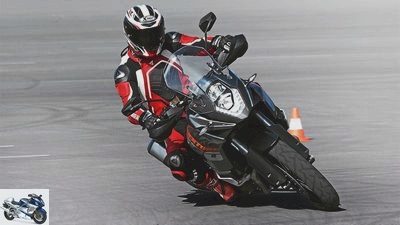
KTM
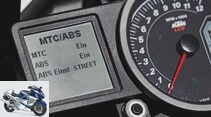
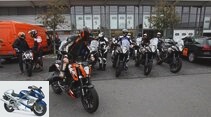
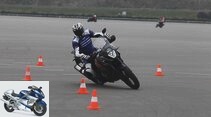
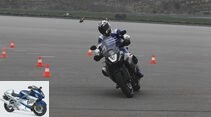
37 pictures
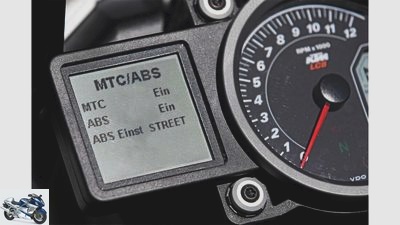
Jahn
1/37
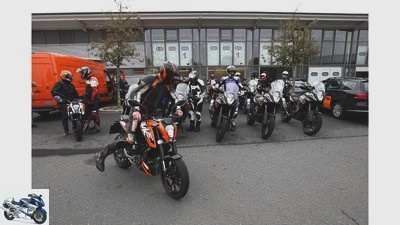
KTM
2/37
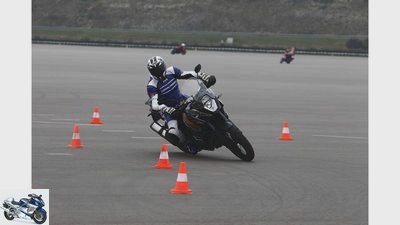
KTM
3/37
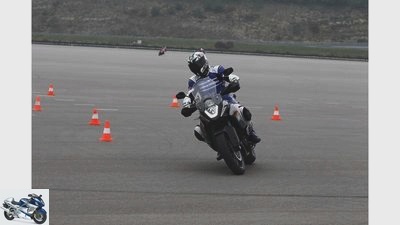
KTM
4/37
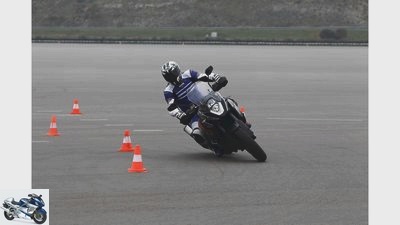
KTM
5/37
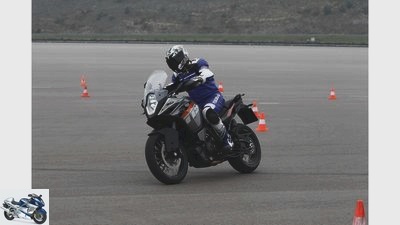
KTM
6/37
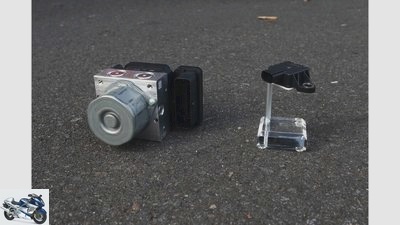
KTM
7/37
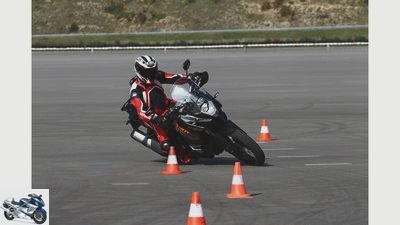
KTM
8/37
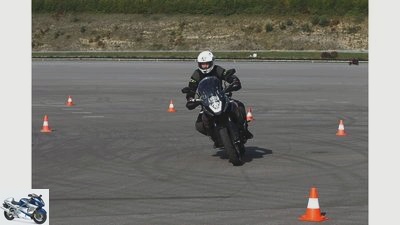
KTM
9/37
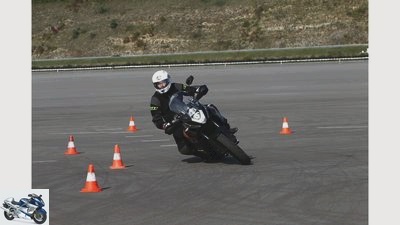
KTM
10/37
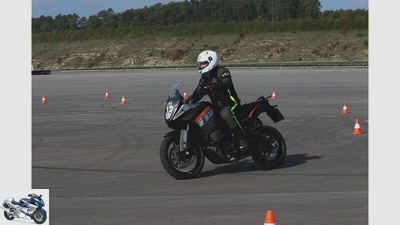
KTM
11/37
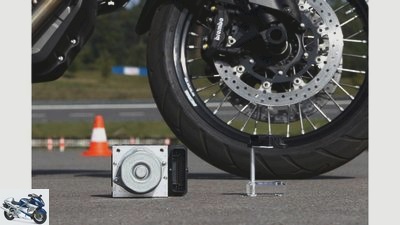
KTM
12/37
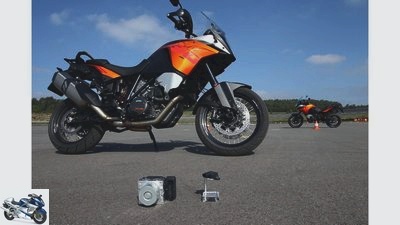
KTM
13/37
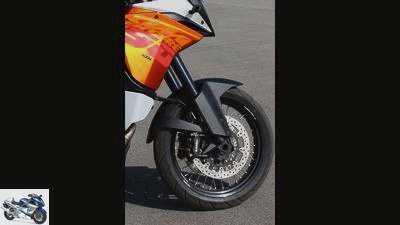
KTM
14/37
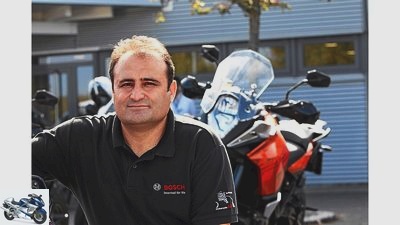
KTM
15/37
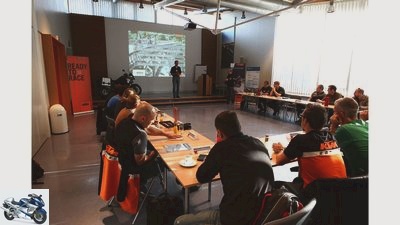
KTM
16/37
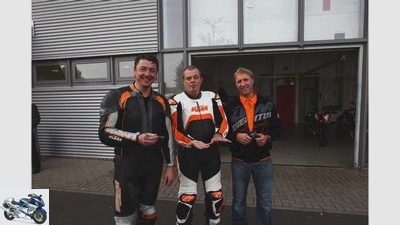
KTM
17/37
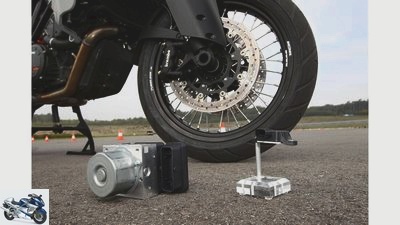
KTM
18/37
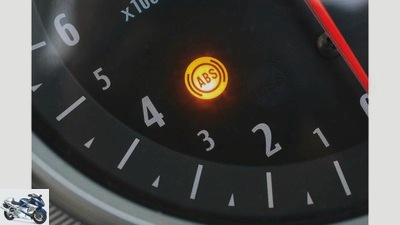
KTM
19/37
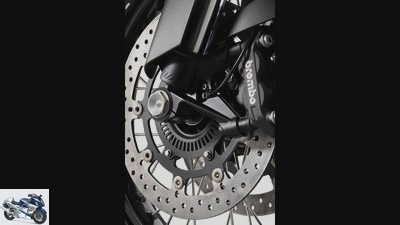
KTM
20/37
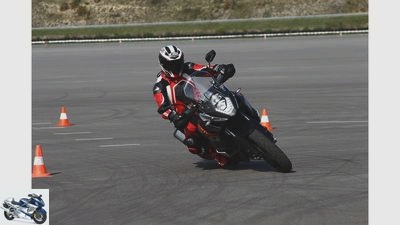
KTM
21/37
If the right hand protector of the 1190 Adventure had been removed, it would be easier to see that tester Georg Jelicic actually reached into his irons in this inclined position.
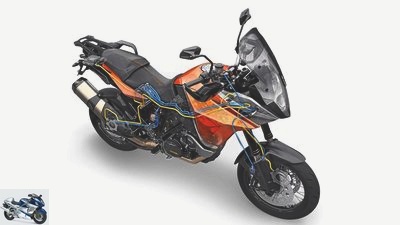
KTM
22/37
The brake lines that meet in the pressure modulator under the driver’s seat are shown in blue. Yellow marks the paths of the measured values supplied by the various sensors. A separate ABS control unit evaluates them at lightning speed.
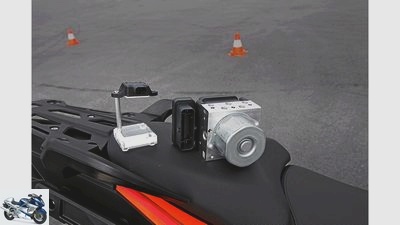
KTM
23/37
Already built into the standard adventure and an important prerequisite for stability control: incline sensor (left) and pressure modulator.
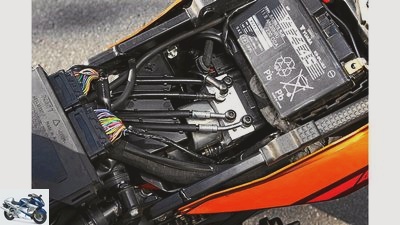
KTM
24/37
The modulator when installed. It connects the two brake circuits to form an integral brake system. The MSC also benefits from this.

KTM
25/37
The blue tarnished rear disc is evidence of intensive use of the rear brake. The driver doesn’t even have to use the lever.
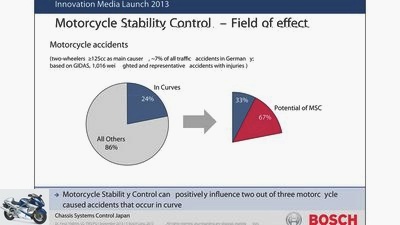
KTM
26/37
Stability control could prevent 67 percent of all cornering accidents. And if it only prevented one, it would have been worth it.
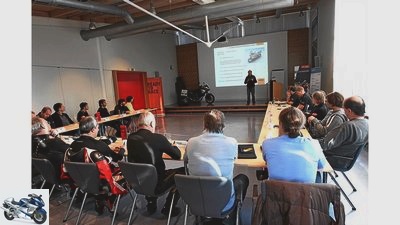
KTM
27/37
Complex systems are not easy to understand, which is why Bosch and KTM have given some profound presentations before the test drives.
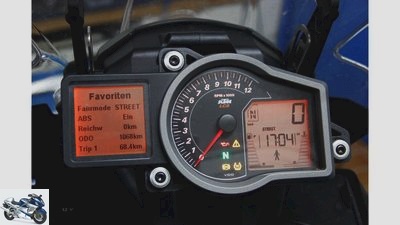
Hertler
28/37
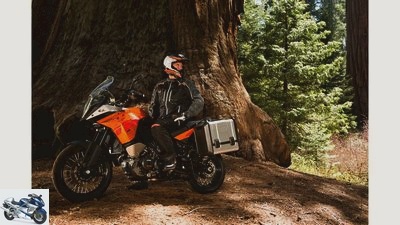
KTM
29/37
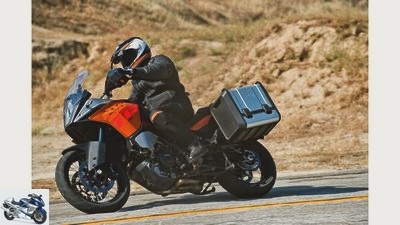
KTM
30/37
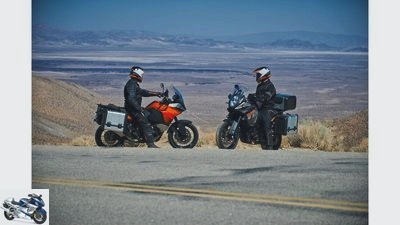
KTM
31/37
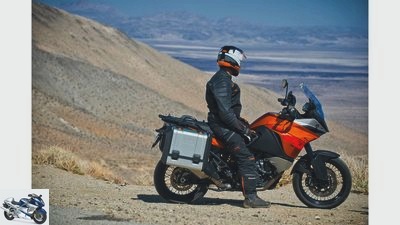
KTM
32/37
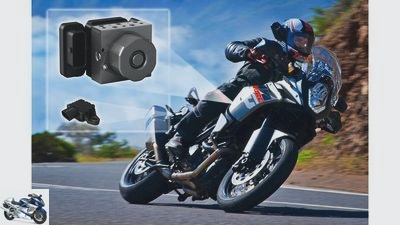
KTM
33/37
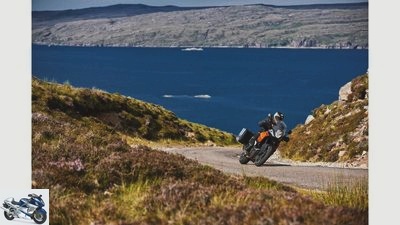
KTM
34/37
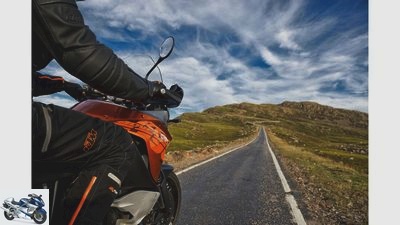
KTM
35/37

KTM
36/37
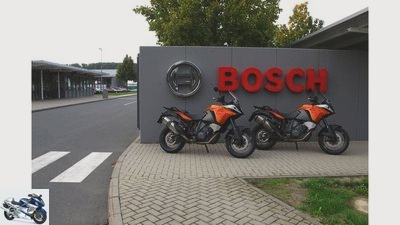
KTM
37/37
motorcycles
Test Bosch sloping ABS
KTM 1190 Adventure with MSC from Bosch
Tried new lean ABS
Bosch and KTM have expanded the ABS of the KTM 1190 Adventure into an anti-lock braking system that is suitable for bends, but avoid the term “cornering ABS”. MOTORRAD found out why this is the case and what the new development feels like.
Ralf Schneider
October 24, 2013
Boxberg 2013. On the extensive dynamic area of the Bosch test site, a group of motorcyclists drives in a circular path and makes serious mistakes in the process. The pilots throw theirs KTM 1190 Adventure into the lowest incline that the relatively smooth surface still allows, and then suddenly pull the handbrake lever through. If a video of the scene were stopped at this point, it would be completely clear to every viewer: They are falling. All of them. And rightly so. Stupid, numb gross motor skills.
Buy complete article
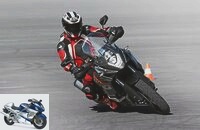
KTM 1190 Adventure with MSC from Bosch
Tried new lean ABS
4 pages) as PDF
€ 2.00
Buy now
But the story continues quite differently. The tortured front tires squeak two or three times, for a short time the front wheel of one or the other is probably folded in slightly, but then everyone continues to drive with a significantly delayed lean angle. Or come to a safe stop. Even when the roadway is narrowed by pylons to about half the width of the street, nobody goes off track. The fear of being pushed into the bend with too much residual speed by an excessively regulating ABS that intervenes too early is unfounded. Also unfounded is the fear of getting off the road outwards due to a violent pitching moment when braking in an inclined position. It is quite natural that the driver has to gradually straighten the KTM 1190 Adventure while braking in a curve; after all, at full deceleration it also quickly slows down and therefore requires less lean angle if the curve radius remains the same.
MSC stands for Motorcycle Stability Control
How is that possible? With the so-called “Motorcycle Stability Control”, the MSC motorcycle stability control, developed jointly by Bosch and KTM. It is a prime example of intelligent information networking. The sensors of the new KTM 1190 Adventure provide measured values that were previously used for different driving modes of ABS and traction control. Over the course of a three-year development period, the engineers have interwoven these measured values together with the ABS hardware that is also already available to create an even more refined network of relationships – the MSC.
This is software that can be ordered for 399 euros with a 2014 model or retrofitted with a 2013 machine. No owner of this year’s KTM 1190 Adventure has missed anything. “We were able to use these six months of development time for the MSC,” says a Bosch developer, explaining the time span between the 1190 Adventure and MSC presentations. His KTM colleague standing opposite agrees with an energetic nod of the head.
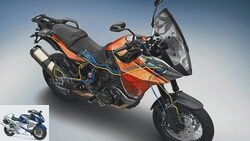
technology & future
Cornering ABS MSC from Bosch in the test
Braking in an inclined position without falling?
read more
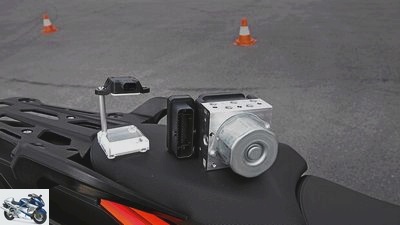
KTM
Already built into the standard version of the KTM 1190 Adventure and an important prerequisite for stability control: lean angle sensor (left) and pressure modulator.
The development became complicated and lengthy because the MSC, in contrast to the conventional ABS, requires a different strategy of intervention. Instead of modulating the brake pressure when the tires have already reached the locking limit, the MSC has to reduce the brake pressure from the start, analogous to the lean angle, so that the tires are loaded close to this limit at best. The reason: with high tire slip, the cornering forces in lean angles of well over 30 degrees would usually not be sufficient to allow the wheel to turn again.
The MSC must therefore use the data supplied by the sensors to conclude how the road surface could be constructed and then measure the possible delay. The so-called brake-by-wire, i.e. the ability to let both brakes work without the driver actually applying them both in a dosed manner, is used cleverly. For example, by quickly shifting pressure on the rear brake when the front wheel is decelerated too much or the driver does not even step on the foot brake lever.
The MSC also reaches its limits on very smooth surfaces
If you move on slippery ground, the system recognizes a rapidly decreasing wheel speed even with low braking pressure and a slight lean angle, while the pitching movement is extremely small due to the weight shifting forward when braking. These are all indicators of poor grip, so the brake pressure must be reduced quickly and vigorously.
Despite these cleverly devised algorithms, the MSC comes closer to the limits – its own and those of physics – on very smooth surfaces, such as dry basalt pavement, than on surfaces with a better grip. In the end, the author was always saved from falling during appropriate attempts, but managed several times to take the foot on the inside of the curve off the peg, ready for support, before the lateral sliding movement of the front wheel was stopped by the MSC. Or to put it less physically: The moments of shock in these situations lasted longer than his reaction time. There should be no problem on normal, even rain-soaked asphalt.
The developers at Bosch and KTM are aggressively addressing this sensitive issue. They emphasize that the MSC cannot offer one hundred percent protection against a fall when braking in an inclined position, and consequently avoid the term cornering ABS (see interview). An MSC cannot help anyone who tilts his motorcycle with the front wheel almost blocked. Strong jumps in the coefficient of friction in the road surface, such as bitumen patching or a wide trail of wet leaves in autumn, are more likely. Anyone who drives into such traps fully braked in a totally inclined position is still very likely to be on the nose. Nevertheless, the chances of surviving such unpleasant situations unscathed are greater than ever. Without MSC, they are zero.
It will be possible to install the stability control at KTM dealerships from the beginning of December, and MOTORRAD recommends that every 1190 Adventure owner do the same. The system doesn’t take away any of your driving pleasure, but it helps enormously if you overdo it in search of it. A few short practice units on suitable terrain will help you use the system correctly if necessary. Some people might be surprised at how much deceleration is possible in an inclined position.
Subscribe to MOTORCYCLE videos on Youtube
Interview with Dr. Fevzi Yildirim
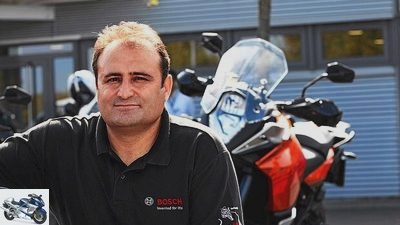
KTM
Dr. Fevzi Yildirim, Project General Manager for two-wheel safety at Bosch.
Mr. Yildirim, you call the system we just tested Motorcycle Stability Control (MSC). Why not cornering ABS?
Because there are situations in bends that cannot be addressed with the MSC and where it does not help. If the speed of the actuators is insufficient or the driving condition is beyond the physical limits.
But I can put my hand on the brakes on a steady road at a considerable angle without locking the wheels?
Yes, that is our claim. A normal ABS detects the locking of the wheel and then reduces the brake pressure to make it turn again. However, if you have a tendency to lock up in an extremely lean position, the cornering force is often no longer sufficient for this ABS strategy. Therefore, the MSC tries to recognize the physical limit and just stay below it.
The MSC does not need any additional sensors in the KTM 1190 Adventure. What is the difference to motorcycles with normal ABS??
The 1190 Adventure has a lean angle sensor with three acceleration and two yaw rate sensors. This enables us to determine the lean angle and the pitch angle, and we also have the wheel sensors and information from the engine control unit.
The brake pressure is also recorded?
We have installed a partially integrated brake system in the 1190 Adventure, with two pressure sensors per brake circuit, one for the brake pumps and one for the wheel circuit. This enables us to record both the driver’s wishes and the pressures available on the bike. In addition, the system constantly calculates the acceleration and braking forces that can be released at the moment and, if necessary, serves the driver up to this limit.
The stability control is reserved for KTM?
No, it is available to everyone.
What’s next?
The interface for semi-active chassis and engine management is in place, we bring the braking system with us. The first thing to do now is to bring these systems closer together and optimize their function. In addition, we are thinking further in two directions. Which actuators do we need to stabilize a motorcycle in situations where current systems are at an end? And if we were able to accommodate predictive sensors on the motorcycle, we could intervene before a danger.
Related articles
-
Cornering ABS MSC from Bosch in the test
Bosch 11 pictures Bosch 1/11 The schematic diagram shows the brake lines from the modulator to the wheel brake cylinders. Bosch 2/11 “Thank you, Dr….
-
MSC cornering ABS in the test in the KTM 1190 Adventure
Jahn motorcycles MSC cornering ABS in the test in the KTM 1190 Adventure MSC in the KTM 1190 Adventure put to the test ABS suitable for lean angles…
-
4 lean ABS systems in the endurance test
4 lean ABS systems in the endurance test Lean ABS systems put to the test 4 current curve anti-lock braking systems in comparison Full in the irons with…
-
New Bosch motorcycle safety systems
Bosch 17th pictures Bosch 1/17 To make motorcycling even safer, Bosch is developing numerous new assistance systems. Bosch 2/17 Motorcycles should learn…
-
Motorcycle anti-lock braking systems in a comparison test
Jahn 13th pictures Jahn 1/13 The relations shift on the wet test track – in the truest sense of the word. Jahn 2/13 In conclusion, it can be said that…
-
Bosch patent for electric motor with ABS: brake charges battery
Bosch counselor technology & future Bosch patent for electric motor with ABS: brake charges battery Bosch patent for electric motor with ABS Brake…
-
Favorite motorcycles of the HP test editors
jkuenstle.de 37 pictures jkuenstle.de 1/37 The favorite motorcycles of the PS editors. jkuenstle.de 2/37 PS editor and stunt driver Volkmar Jacob would…
-
Jorg Kunstle motorcycles Top test Honda CBF 1000 Top test Honda CBF 1000 Fire day Amazing what can become of a super sports car. Honda combined the…
-
Comparison test BMW K 1300 R, Buell 1125 CR, Suzuki B-King, Yamaha Vmax
K 37 pictures Yamaha 1/37 First look at the device from all sides… Yamaha 2/37 Yamaha 3/37 Yamaha 4/37 Yamaha 5/37 Yamaha 6/37 Yamaha 7/37 What is…
-
Test: retrofittable traction controls
fact accesories Test: retrofittable traction controls Test: retrofittable traction controls Traction controls from Bazzaz, Grip One and IRC Content of…